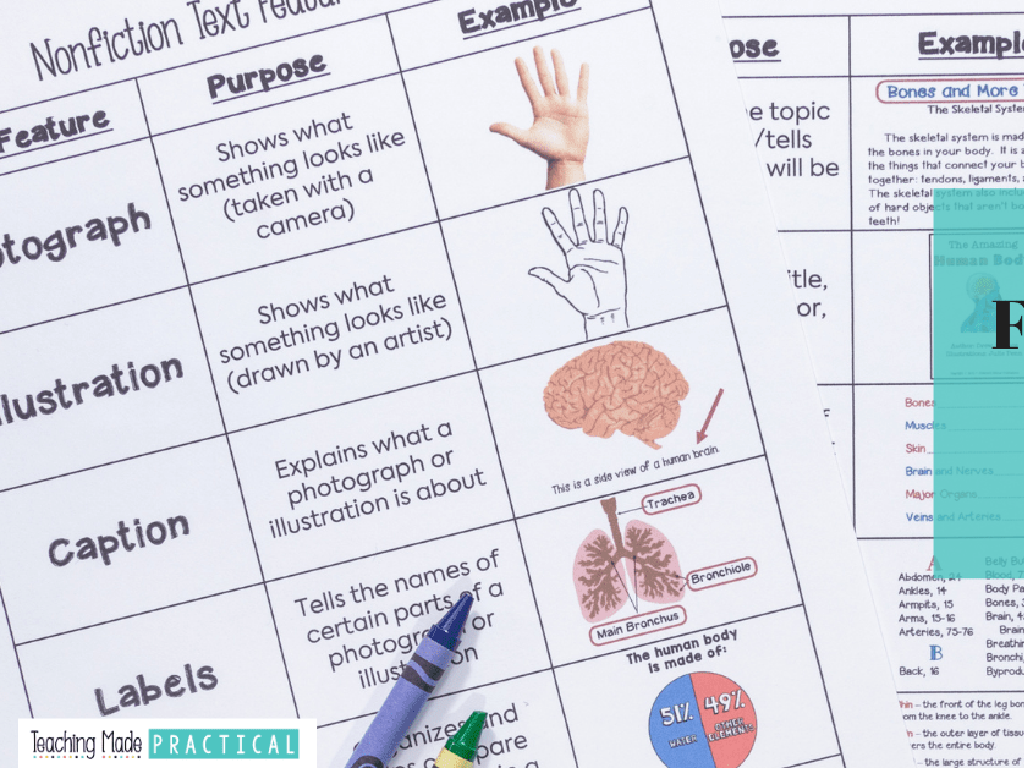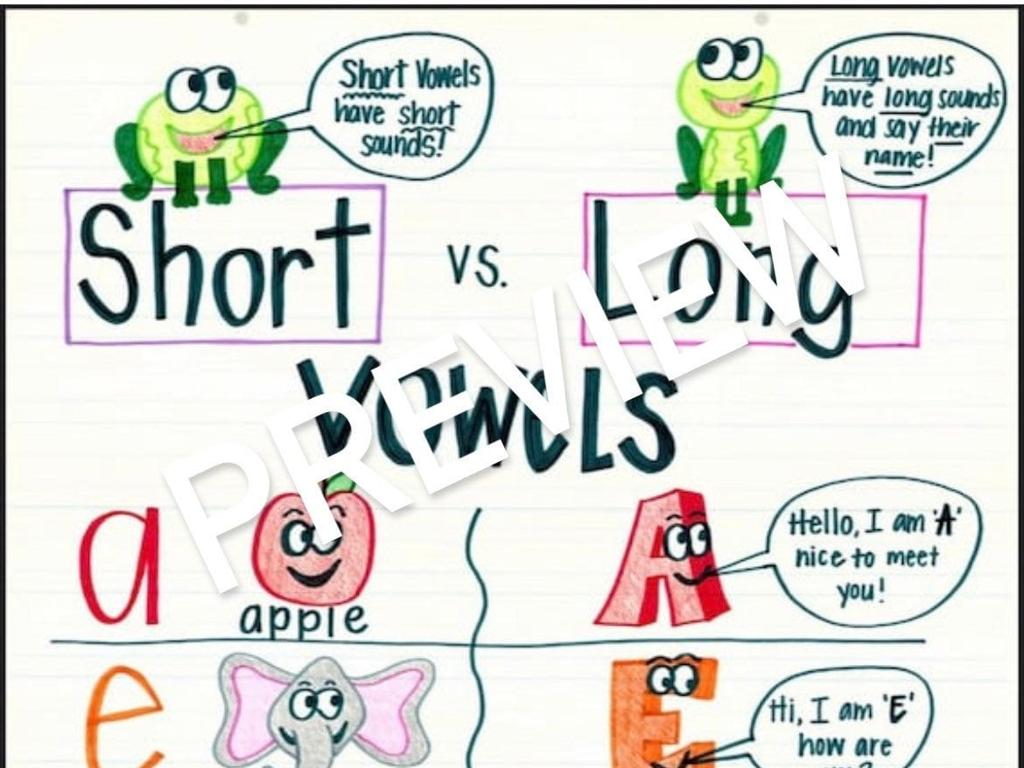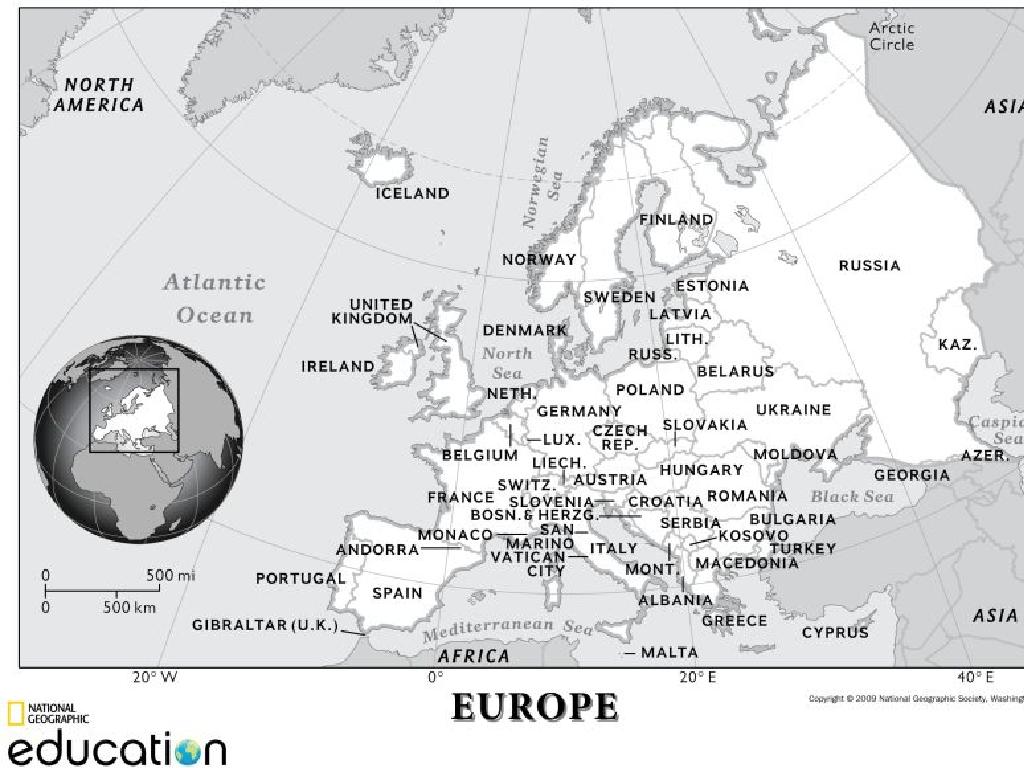Estimate Sums By Rounding: Word Problems
Subject: Math
Grade: Third grade
Topic: Estimate Sums
Please LOG IN to download the presentation. Access is available to registered users only.
View More Content
Welcome to Estimation: Estimating Sums!
– Understanding estimation
– Estimation means finding a number close to the exact amount.
– Estimation in daily life
– Estimation helps us quickly find answers without needing exact numbers.
– How to estimate sums
– Round numbers to the nearest ten to estimate their sum.
– Practice estimation with examples
– Let’s try estimating the total of 34 apples and 47 bananas.
|
This slide introduces the concept of estimation, particularly focusing on estimating sums, which is a valuable skill for making quick and reasonable calculations in everyday situations. Begin by explaining that estimation is like making a very good guess about quantity or number. Emphasize that estimation is not about finding the exact answer but rather a close approximation that is easy to compute mentally. Discuss how estimation can be useful in various real-life scenarios, such as when shopping or cooking. Teach the students the basic steps of rounding numbers to the nearest ten as a method of estimating sums. Finally, engage the students with simple word problems that involve estimating sums to reinforce the concept.
Understanding Rounding: Estimate Sums
– Learn to round to the nearest ten
– Steps to round numbers
– Find the nearest ten: 54 rounds to 50, because 54 is closer to 50 than to 60
– Practice rounding on a number line
– Visualize numbers on a line to see which ten is closest
– Apply rounding to estimate sums
– Use rounding to quickly estimate the total of 54 + 29 by rounding both to the nearest ten first
|
This slide introduces the concept of rounding numbers as a foundational skill for estimating sums. Start by explaining the importance of rounding to the nearest ten and how it simplifies calculations. Demonstrate the process of rounding by identifying which ten a number is closest to. Use a number line to visually support the concept, as it helps students see the distance between numbers and their nearest tens. Finally, apply these skills to estimate sums in word problems, which is a practical application of rounding. Encourage students to practice with different numbers and to share their rounding strategies with the class.
The Importance of Rounding Numbers
– Simplify calculations
– Use rounding in daily life
– Helps in making quick decisions
– Example: Estimating costs
– If an item costs $4.99, we round to $5 to estimate total shopping costs.
– Example: Timing activities
– To guess how long a trip will take, we round travel time to the nearest hour.
|
Rounding numbers is a fundamental skill in mathematics that makes complex calculations more manageable for third graders. By approximating numbers to the nearest ten, hundred, or other place value, students can quickly estimate answers without needing exact figures. This skill is particularly useful in everyday situations such as shopping, where estimating the total cost of items can be done rapidly by rounding prices. It’s also helpful in time management, allowing for a general idea of how long tasks may take. For instance, if a recipe says it takes 47 minutes to bake, we might round to 50 minutes for simplicity. Encourage students to think of other scenarios where rounding makes things easier and to practice this skill with various word problems.
Estimating Sums with Rounding
– Steps to estimate sums
– Round numbers to nearest ten
– If a number ends in 1-4, round down. Ends in 5-9, round up.
– Add rounded numbers together
– After rounding, combine the numbers for an approximate total.
– Estimate the total sum
|
This slide introduces the concept of estimating sums by rounding numbers to the nearest ten before adding them. It’s a useful technique for quickly calculating an approximate total without needing the exact sum. Start by explaining the steps to estimate sums, emphasizing the importance of rounding as a tool for estimation. Demonstrate rounding with examples, such as rounding 24 to 20 and 36 to 40, and then show how to add these rounded numbers to get an estimated sum. Encourage students to practice with different sets of numbers and to understand that the estimated sum is not the exact answer but a close approximation. This skill will help them in making quick decisions and checking their work for reasonableness.
Estimation in Action: Word Problems
– Apply estimation to real-world
– Read the problem with care
– Understand what the problem asks
– Find numbers to estimate
– Look for numbers to round up or down
– Estimate to solve the problem
– Use rounding to get a close answer
|
This slide is aimed at helping third-grade students apply their knowledge of estimation to solve real-world problems. Encourage students to read word problems carefully to understand what is being asked. They should identify the key numbers in the problem that can be rounded to the nearest ten or hundred to make the problem easier to solve. After rounding the numbers, students should use these estimates to find an approximate answer to the problem. Remind them that estimation helps to quickly find an answer that is close enough to the exact answer, which can be very useful in everyday situations. Provide several examples of word problems and solve them together as a class, discussing the estimation process step by step.
Class Activity: Estimation Station
– Break into small groups
– Receive word problems for estimation
– Solve problems using rounding
– Round numbers to the nearest ten or hundred
– Share estimates with the class
– Explain your rounding process and results
|
This activity is designed to encourage collaborative learning and practice estimation skills. Divide the class into small groups and distribute different word problems to each. Guide the students to round numbers to the nearest ten or hundred as a strategy to estimate the sums. After solving, each group will present their estimates and explain the rounding process they used. For the teacher: Prepare a set of word problems of varying difficulty. Monitor the groups to ensure they understand the concept of rounding. Encourage students to discuss their strategies within their groups before sharing with the class. Possible activities could include estimating the cost of groceries, the total time spent on chores, or the number of items in a jar.
Estimation Reflections
– Key points of estimation
– Estimation helps us quickly find approximate sums.
– Importance of estimation skills
– Estimating can save time and helps in making quick decisions.
– Estimation in daily life
– Use estimation when shopping or planning time.
– Reflect on today’s learning
|
Today, we’ve learned that estimation is a valuable skill that allows us to find approximate sums quickly without needing exact numbers. Understanding how to round numbers and estimate helps us in various real-life situations, such as when we’re shopping and need to keep track of approximately how much we’re spending, or when we’re planning our day and deciding how much time to allocate to activities. It’s important to reflect on the concept of estimation and recognize its value in our everyday lives. Encourage students to think of times when they have used or could use estimation outside of the classroom. This reflection will help solidify their understanding and appreciation of the estimation skills they’ve learned today.






